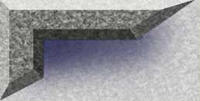|
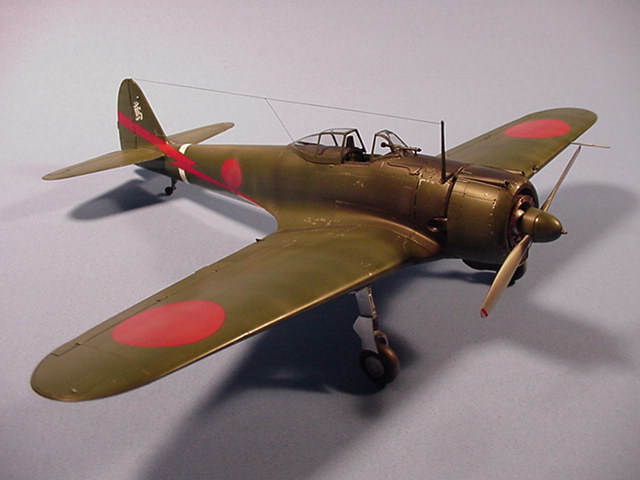
|
| Hasegawa's 1/48th Ki-43-I built OOB with Aeromaster Decals |
This model represents the aircraft nicknamed "Tobi" flown by Sgt. Isamu Sasaki while assigned to the 1st Chutai of the 64th
Sentai in Burma during early 1942. The nickname refers to a species of Kite, which seems appropriate since Nakajima
named the Ki-43 "Hayabusa" after the Peregrine Falcon. Sasaki was credited with 38 victories during the war- mostly
in the China-Burma-India Theatre(CBI), and survived the war.
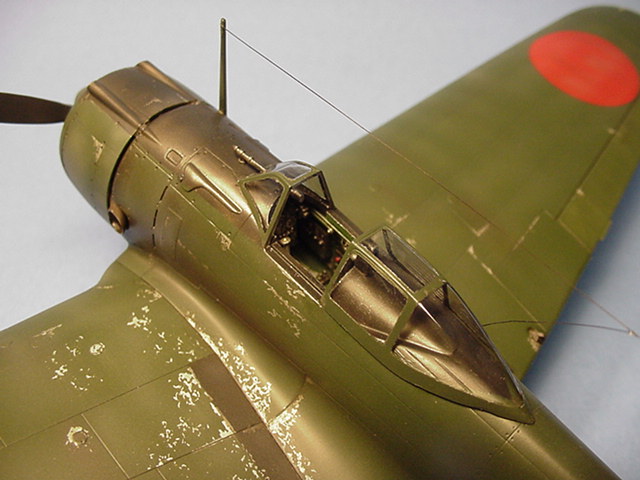
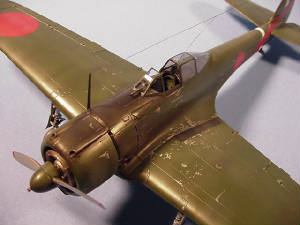 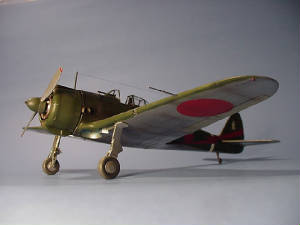 Both the Sasaki and Nakamura (below) Ki-43's received a custom mix for Nakajima interior green in the cockpits, a metallica
foundation of Floquil Old Silver over the entire exterior, a transparent varnish of Modelmaster Metallic Blue varnishes in
the wheel wells. From there the schemes departed as the flight control surfaces on both aircraft and the entire
underside of the latter were primed in a custom mix for Japanese Army grey green. The upper surfaces of the Sasaki's
aircraft wear the more conventional dark green that appears in many photos, while Nakamura's appears to have been camoflaged
with a much lighter green over a light brown or even olive. Since the 2nd Chutai had just returned to Burma from Malaysia
when Nakamura and his aircraft were photographed, I wonder if they might have captured some RAF or Dutch paints and put them
to use. Probably not, but it's fun to think about.
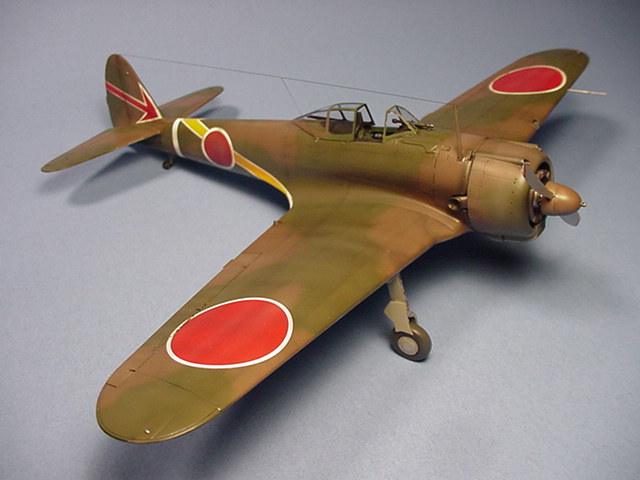
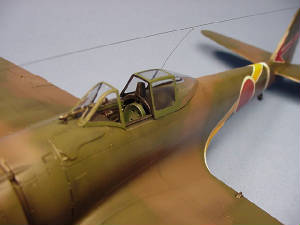
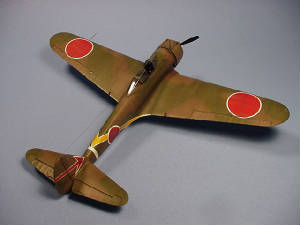
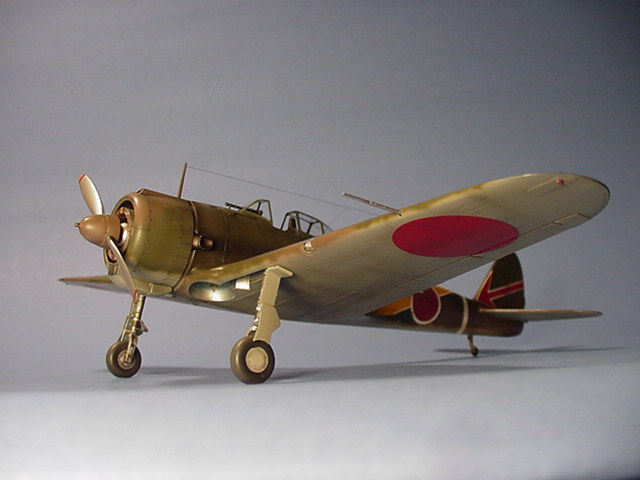
Hasegawa's Ki-43 kits are quite easy to build, fit well, and offer some interesting subjects with striking markings and
Aeromasters decal sets for the Ki-43 are still in wide circulation. I recommend using either a vacuform canopy or shaving
down the inside lower edges of the kit canopy if it is to be displayed in the open position. Test fit yours and the reason
will be obvious- the fit on that part is excellent when closed, but otherwise... hmm.
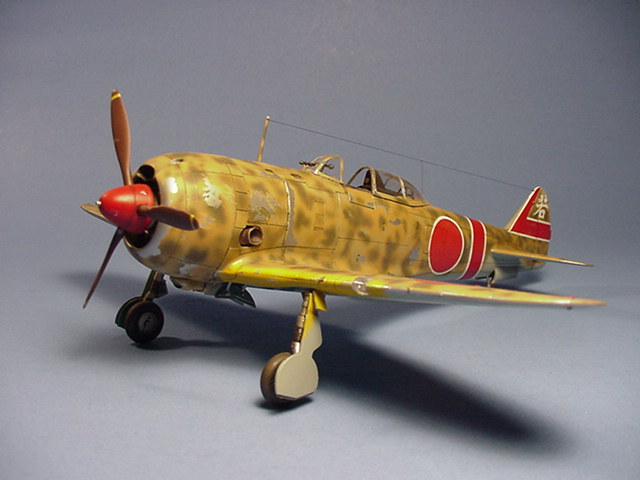
|
| Model was primed with Alclad Light Aluminum and then camoflaged |
Hasegawa's 1/48th scale Nakajima Ki-44 Shoki, above, in the markings of Capt. Yukiyoshi Wakamatsu. He led
the 2nd Chutai of the 85th Sentai while based at Nanking, China in the summer of 1943. Wakamatsu is credited with at
least 18 victories, several over advanced types like the P-51 Mustang. He lost his life in combat while flying the Ki-84
Hayate on December 18, 1944.

|
| Decals are from Aeromaster's |
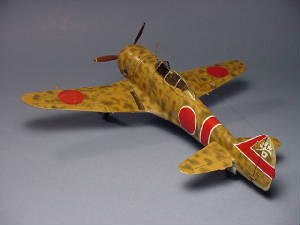
Although Ki-44s may be best known for their role in the defense of Japan against B-29 raids, many units were outfitted
with them in the Phillipines, Formosa, and China. Reviewing all the photos I could find of 85th Sentai Ki-44's, and
others in similar schemes, I found that the camoflage patterns on all of them were more ragged than depicted in the Aeromaster
instructions. Base color is a mixture of ModelMaster RLM79 Sandgelb & Russian Topside Brown, green blotches are
a mixture of Floquil RLM 62 dark green & RLM 81 Braunviolet. For the large chipped areas I masked off
the Alclad with canopy masking fluid, and removed it after the camoflage was applied.
Kawasaki Aircraft Images
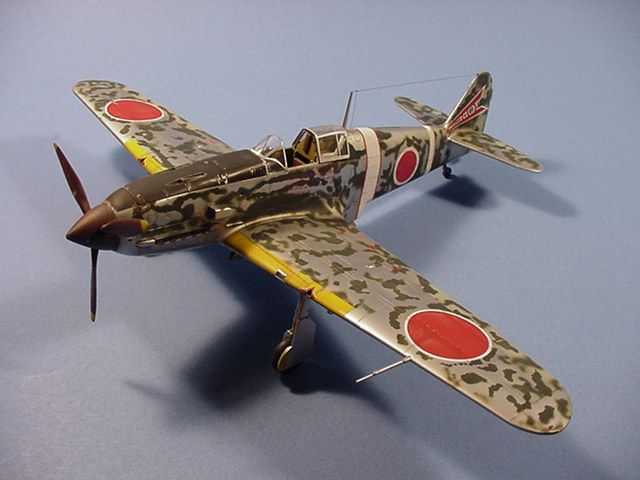
|
| Like the Ki-44, this model was painted with Alclad Light Aluminum, then camoflaged |
Kawasaki Ki-61 Hien in the markings of Capt. Shogo Takeuchi, leader of the 68th Sentai's 2nd Chutai. Flying from
Wewak, New Guinea in 1943, Takeuchi was revered by his men for his aggressive spirit and devotion to duty. The 68th
flew under very challenging circumstances, from submarine-choked supply lines, an aircraft with difficult serviceability problems,
and a sky full of second generation allied fighters like the P-47 Thunderbolt, P-38 Lightning, and F4U Corsair. Credited
with at least 30 victories, Takeuchi was wounded in battle in the winter of 1944. Insisting on flying operations, he
returned to Wewak in a shot up aircraft and was killed in a crash while attempting to land.
While the metal finish was drying, the camoflage pattern was drawn onto a piece of paper and then burned out with
an incense stick. That was used as an airbrush template for the upper surfaces. Seems I never get an exact match
with my photos when the camoflage is this crazy, but I think I came close; density and distribution is the critical thing
with a scheme like this since the green can be easily overdone. For the dark green I used a mixture of Floquil's
RLM73 Dunkelgrun & generic medium green. The decals were faded, and the red pin stripes roughed up, using thinned
oil pastels as a wash.
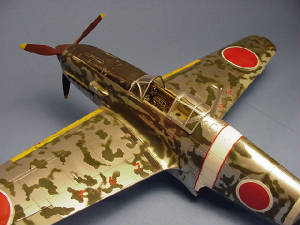
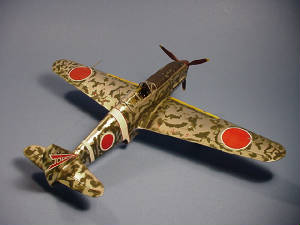
|
